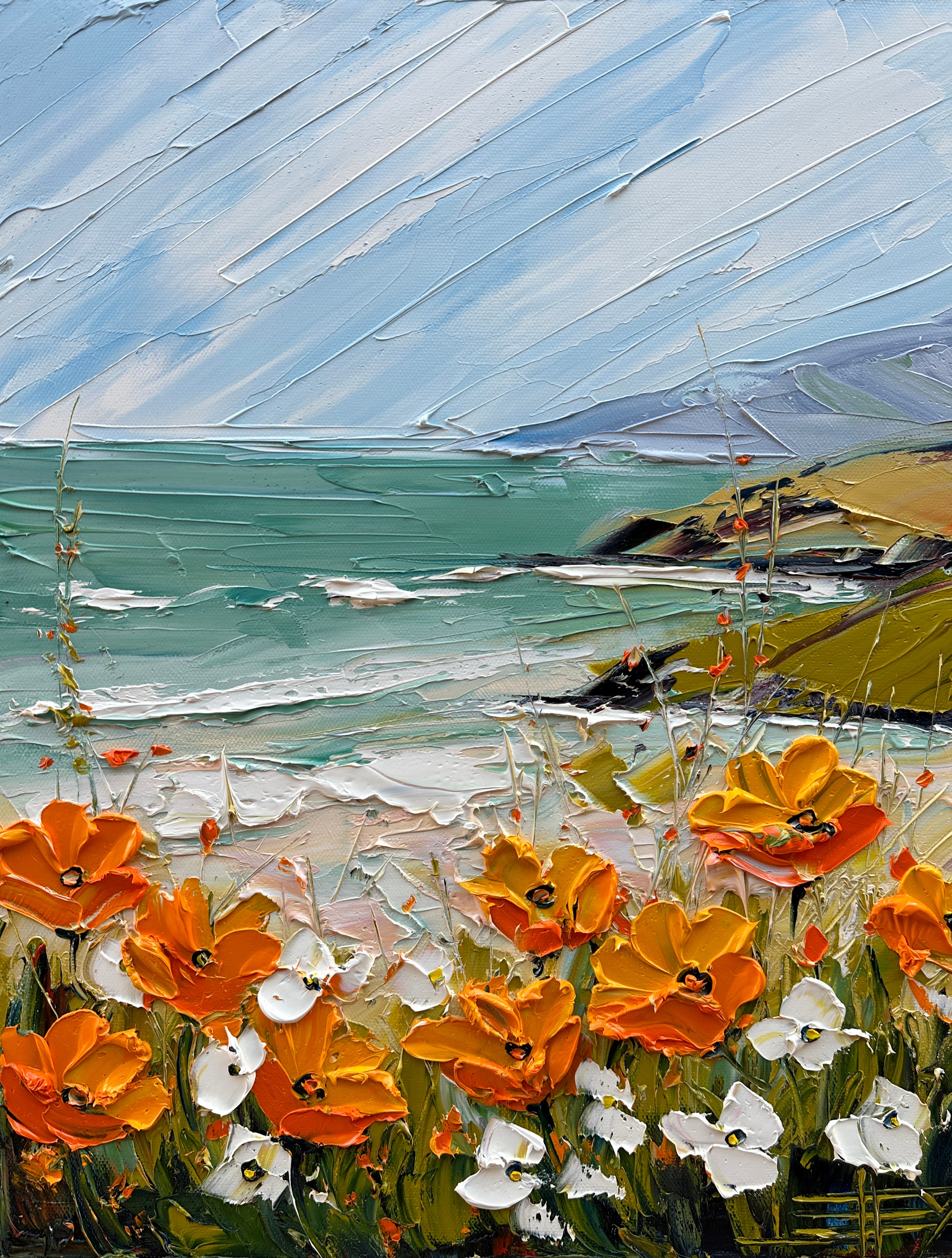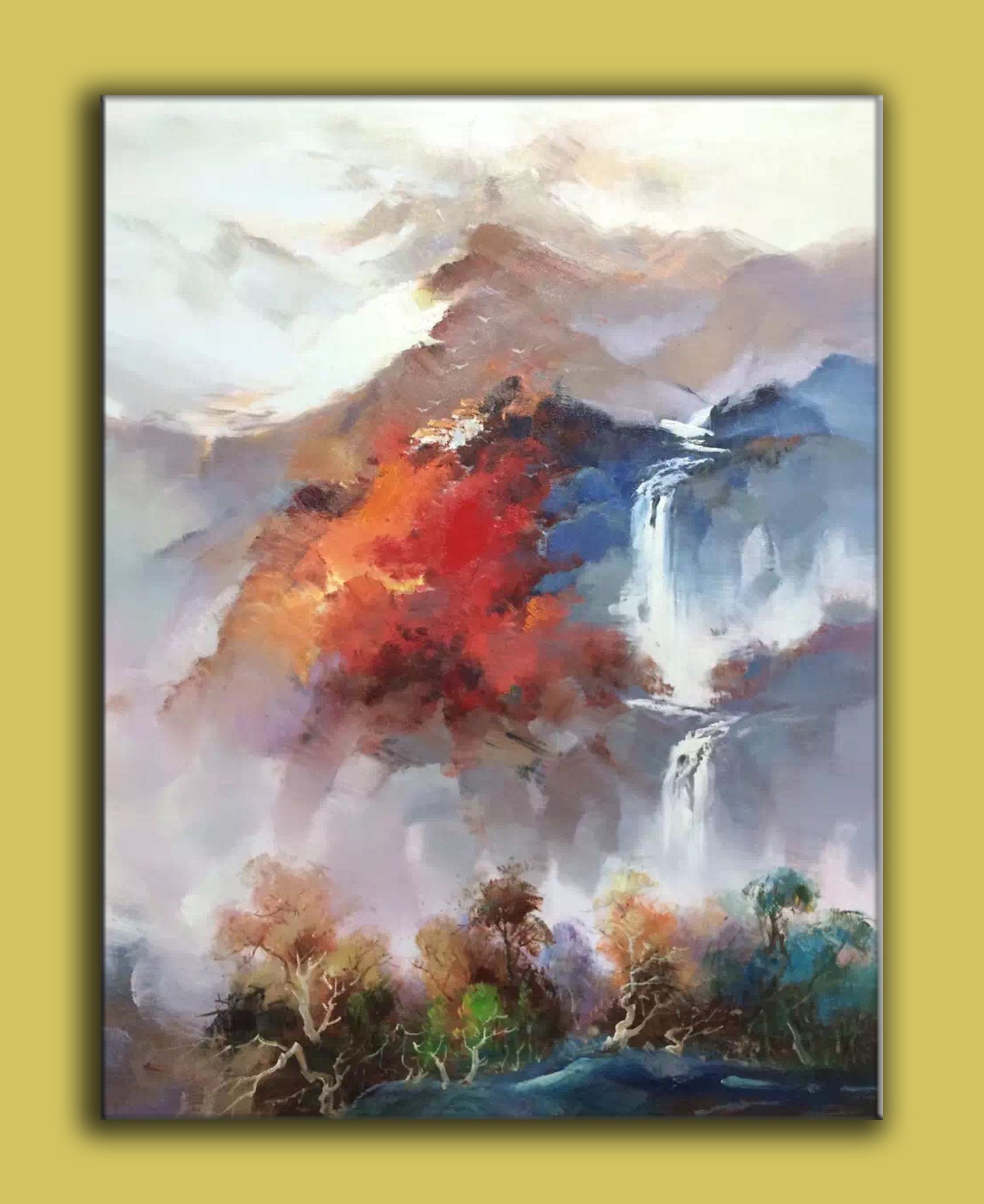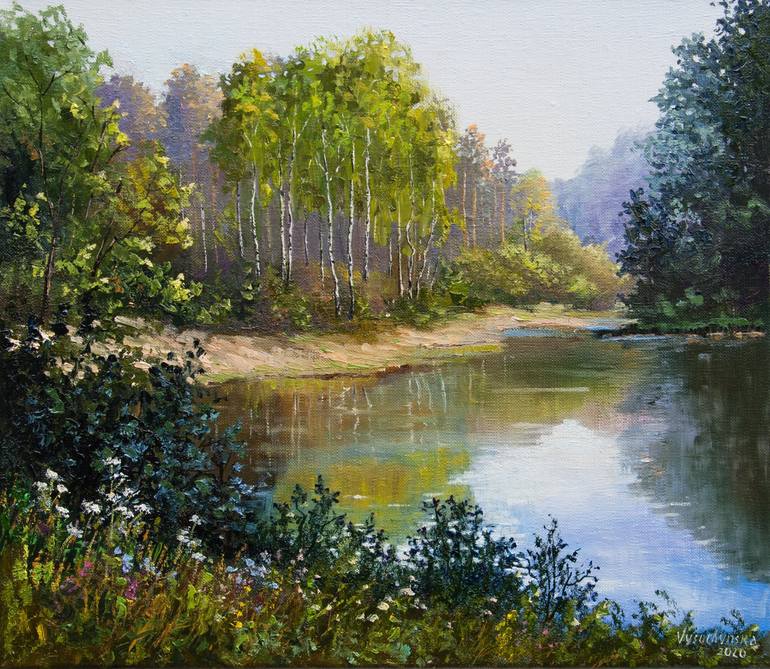The Advantages of Purchasing Oil Paints: Why They Are a Timeless Financial investment
The advantages of acquiring oil paintings expand beyond mere aesthetics. These artworks bring historic significance and cultural value, making them worthwhile enhancements to any collection. Their special structures and strategies add to an interesting visual experience. Well established musicians often see their job appreciate over time, presenting a prospective economic benefit. As one discovers the complex factors for spending in oil paintings, the deeper effects of such an option come to be significantly apparent
The Visual Appeal of Oil Paintings
The attraction of oil paintings hinges on their abundant structures and vivid shades, which can change any room right into a remarkable setting. These art work possess a depth that captivates viewers, drawing them into the ins and outs of the brushstrokes and the interplay of light and darkness. The glossy coating of oil paint enhances the visual experience, enlivening scenes and subjects in a manner that tools often can not achieve. In addition, the variety of designs-- from classical to contemporary-- allows for a diverse choice that can complement any style. The emotional vibration conveyed through color options and methods includes a layer of connection in between the onlooker and the artwork, making oil paintings not just decorative items, but powerful expressions of creative vision.
Historic Significance and Social Value
Oil paints work as essential links to a creative heritage, showcasing methods and designs that have advanced over centuries. They envelop cultural expressions and identifications, showing the worths and narratives of their time. By getting these works, people contribute to the conservation of background and the appreciation of varied social heritages.
Artistic Heritage Preservation
While many may ignore the value of creative heritage, buying oil paintings plays an important function in maintaining historical and social narratives. These artworks act as aesthetic documents of their time, capturing the essence of social values, practices, and historical events. By getting oil paintings, collectors contribute to the guarding of cultural heritages, ensuring that future generations can learn and value from these creative expressions. Each item reflects the distinct story of its creator and the context in which it was made. Furthermore, the ongoing gratitude and display screen of oil paintings in various setups aid to foster an understanding of diverse creative movements, enriching the social landscape. Investing in oil paintings is not simply a monetary decision but an act of cultural stewardship.
Cultural Expression and Identity
Art works as an effective tool for social expression and identity, mirroring the diverse stories that shape cultures. Oil paints, in particular, record the significance of social heritage, showing historical contexts and sociopolitical environments. Each brushstroke communicates emotions and tales unique to certain practices, enabling customers to involve with the musician's social background. This link promotes a feeling of comprehending and belonging amongst various neighborhoods. Furthermore, oil paints often function as visual documents of social advancement, showcasing changes in identification over time. The financial investment in these art work not just supports artists yet likewise protects social legacies, making them significant possessions for collection agencies. Inevitably, oil paints improve one's recognition for the ins and outs of human experience and the rich tapestry of social identity.
Appreciation in Value With Time

The gratitude of oil paints with time is influenced by various aspects, including historical value fads that reflect altering preferences and social importance. In addition, the reputation of the musician plays a vital duty in identifying the artwork's market price, frequently increasing as the musician gains recognition. Market demand variations can better affect costs, making oil paintings a possibly lucrative financial investment for collectors.
Historic Worth Fads
As collectors look for to purchase tangible properties, the historic worth fads of oil paintings disclose an engaging narrative of gratitude gradually. Historically, oil paintings have demonstrated a consistent upward trajectory in worth, particularly for jobs by recognized artists. Economic cycles and market need have influenced these trends, with durations of increased passion typically leading to substantial rate rises. Auction records often highlight the impressive returns accomplished by famous pieces, additionally enhancing the concept of oil paintings as feasible long-term investments. Furthermore, social movements and changes in collector preferences have periodically spurred unforeseen appreciation, disclosing that the art market, while somewhat uncertain, usually prefers top quality oil paints. Recognizing these historical fads can direct capitalists in making informed choices.
Musician Track Record Influence
While the credibility of a musician plays a crucial function in the admiration of oil paintings, it is essential to acknowledge that this influence can differ considerably based upon a number of aspects. Established artists, specifically those with a substantial historic or social impact, often tend to see their jobs value much more quickly. Alternatively, lesser-known or emerging musicians might not experience the exact same degree of need, impacting their art work's value. In addition, the artist's capability to develop a constant body of work and maintain relevance in the art world can affect lasting admiration. Collectors frequently seek jobs from musicians who are acknowledged by respectable galleries and establishments, which can even more boost the value of an oil paint gradually, making artist online reputation a critical factor to consider in financial investment choices.

Market Demand Variations
How do market demand fluctuations influence the recognition of oil paintings gradually? The value of oil paints is fundamentally linked to market need, which can differ based upon financial conditions, trends, and collectors' preferences. In times of financial prosperity, demand usually climbs, resulting in increased costs as more buyers go into the marketplace. Alternatively, throughout economic recessions, need might dwindle, triggering worths to stagnate or even decline. Additionally, the appeal of particular musicians can shift, affecting their job's desirability. Ultimately, understanding market need is essential for financiers, as well-managed collections can appreciate significantly gradually, reflecting both the talent of the musician and the more comprehensive market dynamics. This interplay highlights the significance of strategic getting in oil paint financial investments.
One-of-a-kind Textures and Strategies
Oil paintings astound viewers with their unique structures and techniques, showcasing the artist's mastery over the medium. The thick application of paint, referred to as impasto, creates a three-dimensional result, inviting touch and enhancing aesthetic deepness. Artists commonly utilize numerous brush strokes, layering, and glazing approaches to accomplish luminous shades and complex information. This convenience permits rich contrasts and refined shifts, making each artwork distinctly expressive. The slow drying time of oil paint enables artists to blend shades effortlessly, resulting in lively shades and smooth slopes. These strategies read more add to the painting's total personality, making it a compelling prime focus. Each oil paint acts as a sign of the creative thinking and skill integral in conventional artistic techniques.
Adaptability in Home Design
The distinct appearances and methods of oil paintings not only showcase creative ability yet also boost their flexibility in home style. These artworks can flawlessly enhance numerous indoor designs, from modern-day minimalist to standard style. Oil paintings act as prime focus, drawing focus and triggering conversation amongst visitors. Their rich colors and depth can integrate with various shade combinations, making them versatile to altering layout trends. Additionally, the psychological resonance of oil paints can create setting, whether it be heat in a relaxing living space or vibrancy in an imaginative work area. By incorporating oil paintings, home owners raise their rooms, changing them right into attentively curated settings that show personal preference and imaginative admiration. Ultimately, oil paints are an enduring option for enhancing home visual appeals.
Connection to Renowned Musicians
While several art kinds can evoke appreciation, acquiring oil paintings often develops a special link to distinguished musicians throughout background. Having an oil paint allows collectors to involve with the creative visions of masters like Van Gogh, Monet, and Rembrandt. Each brushstroke embodies the musician's feelings, techniques, and objectives, using insight right into their world. This connection transcends time, as each piece carries a story that reflects the historical and cultural context of its creation. Enthusiasts not only obtain a masterpiece however also a piece of the artist's tradition. As art enthusiasts explore the tales behind these paintings, they get a deeper appreciation for the workmanship and imaginative activities that shaped their development, enhancing the value of their investment.
Mental and psychological Benefits of Art
Art regularly functions as an effective catalyst for emotional and emotional health. The existence of oil paintings in a living area can evoke a range of feelings, from serenity to motivation. Their dynamic shades and detailed information supply audiences an escape, enabling representation and consideration. Studies suggest that involving with art can minimize tension and anxiety, cultivating a feeling of calmness. Additionally, owning initial artwork can produce an individual connection, enhancing sensations of pride and delight. This psychological bond usually brings about a deeper gratitude of one's environments, changing a home into a home. Eventually, the psychological benefits of art extend beyond aesthetic appeals, adding to total psychological wellness and enriching life experiences.

Often Asked Concerns
Exactly how Do I Pick the Right Oil Paint for My Space?
Selecting the ideal oil painting entails taking into consideration the space's color pattern, size, and overall visual. One must examine personal preference, the paint's emotional influence, and just how well it matches existing decor prior to making a choice.

What Factors Influence the Value of an Oil Painting?
The worth of an oil painting is influenced by elements such as the musician's track record, provenance, historical relevance, market, rarity, and condition need. Each aspect adds to overall worth and charm among collectors.
Just How Can I Take Care Of and Preserve My Oil Paint?
To take care of and preserve an oil paint, one need to frequently dust it with a soft fabric, avoid direct sunlight exposure, control humidity degrees, and consider expert cleansing to protect its vibrancy and integrity.
Exist Specific Musicians Recognized for Their Oil Paints?
Numerous artists are renowned for their oil paintings - oil paintings for sale. Noteworthy figures consist of Vincent van Gogh, Claude Monet, and Rembrandt, each celebrated for their unique strategies and contributions to the art world with lively, distinctive oil tools
Where Can I Acquisition Authentic Oil Paintings?
Authentic oil paints can be bought from reputable galleries, art fairs, and online systems focusing on great art. Enthusiasts ought to validate the credibility and provenance prior to making an acquisition to assure a beneficial financial investment. Historically, oil paints have shown a consistent upward trajectory in worth, specifically for jobs by well established artists. While the online reputation of an artist plays a crucial role in the gratitude of oil paints, it is important to acknowledge that this influence can differ significantly based on a number of aspects. Oil paintings astound viewers with their distinctive structures and methods, showcasing the artist's proficiency over the medium. While many art kinds can stimulate appreciation, acquiring oil paintings usually develops a distinct link to prominent artists throughout history. The worth of an oil paint is affected by variables such as the musician's track record, provenance, historic significance, problem, market, and rarity need.